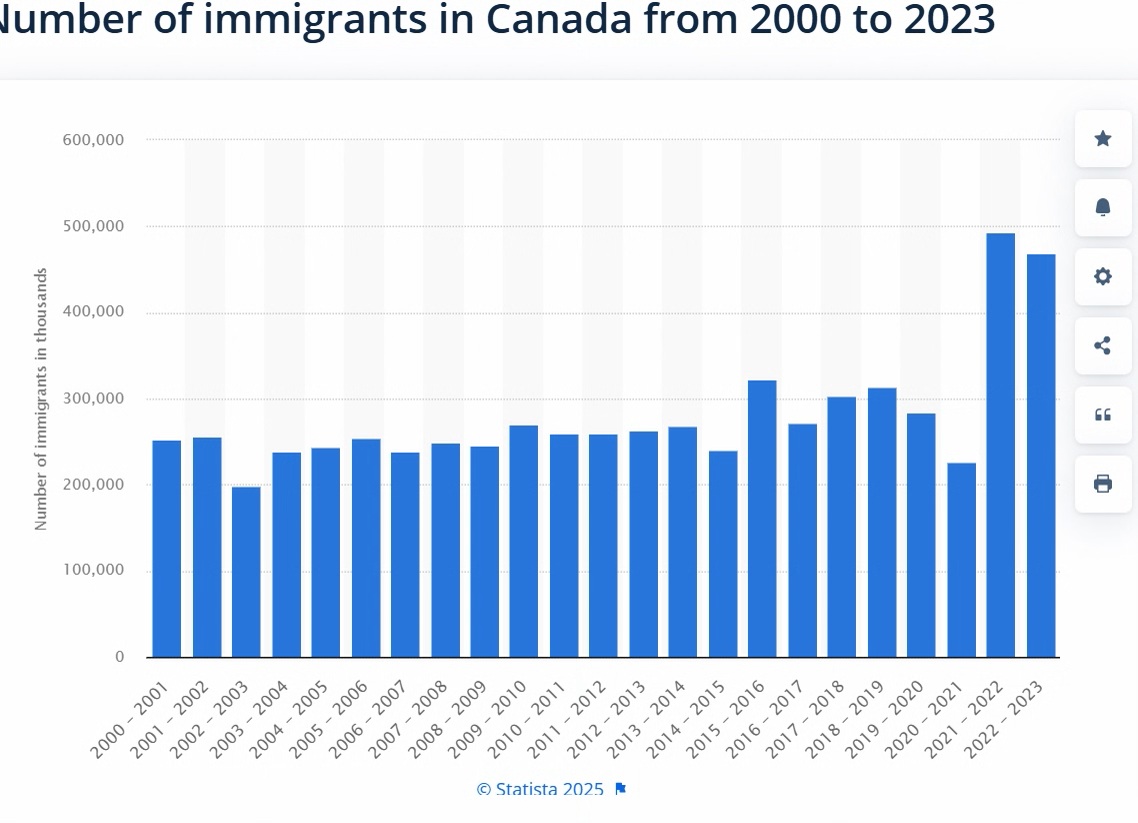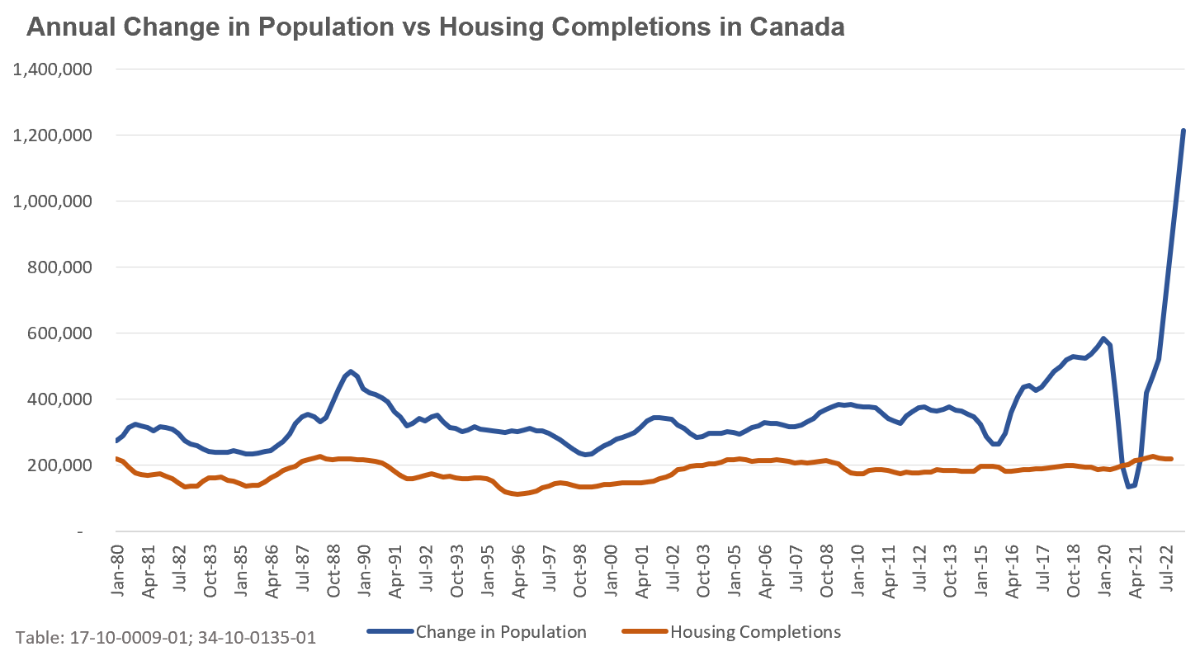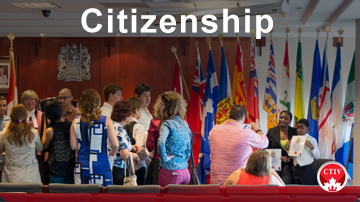Canada is well known for its spacious countryside, cultural diversity, superior education, healthcare system and economic stability, has one of the highest immigration rates and is considered one of the most popular destinations for Immigrants.

Number of immigrants in Canada from 2000 to 2023

Housing Crisis in Canada: The Immigration-Driven Imbalance
Housing, housing, housing. It’s the issue dominating headlines—and for millions of Canadians, it’s a daily struggle. With affordability slipping out of reach, the search for shelter has become a source of relentless stress. While activists and pundits blame boomers, Airbnb, or zoning laws, the core driver of this crisis remains glaringly clear: Canada’s population is growing faster than housing supply, and immigration is the engine behind that growth."Canada housing crisis," "Should be blame immigration or was that need of hour, are we following immigration cut driven, solutions for Housing Crises) while framing the core argument.
2023: Canada welcomed 468,000 new immigrants (per IRCC targets) while completing just 240,000 homes. At this rate, every new home built must shelter 5 people—a mathematically impossible standard.
Population Growth vs. Housing: Since 2015, Canada’s population has grown by 5.6 million people, but only 1.3 million homes were built. For every new home, 4.3 people were added to the population.
Immigration’s Share: In 2023, 97.6% of Canada’s population growth (1.2 million people) came from immigration, while housing completions stagnated at a 50-year low relative to demand.
Ontario: In 2022, the province added 500,000 new residents (88% via immigration) but built only 96,000 homes. That’s 5.2 people per home—a deficit worsening yearly.
Alberta: Last year, 65% of its population growth (78,000 people) was immigration-driven, yet the province built just 34,000 homes. Demand is doubling supply.
G7 House Prices: Canada’s home prices have risen 4x faster than the G7 average since 2015.
G7 Population Growth: Canada’s population grows 3x faster than other G7 nations, with immigration accounting for nearly 100% of the gap.
(Sources linked below)
Canada would need 1.3 million new homes by 2030 to close the affordability gap. Yet even if construction doubled overnight, runaway population growth would outpace it:
At current immigration rates (500,000+ annually), Canada will add 5 million more people by 2030—demanding 1.25 million additional homes just to keep up.
Reality Check: Canada has never built more than 270,000 homes in a single year. To meet demand, construction would need to triple—something no expert, developer, or government claims is feasible.
While politicians tout “supply-side fixes,” they ignore the demand tsunami caused by record immigration:
Temporary residents: In 2023, 804,000 international students, 315,000 TFWs, and 142,000 asylum seekers entered Canada—many competing for the same scarce rentals.
Inflated Demand: Since 2015, Canada’s population grew 8x faster than the U.S., while housing starts lagged behind.
No zoning reform, tiny home, or tax tweak can offset this imbalance.
To restore affordability, Canada must:
Reduce Immigration Levels: Temporarily cap permanent and temporary immigration until housing and infrastructure catch up.
Prioritize Skills + Housing Links: Fast-track visas only for workers in construction and healthcare—fields critical to solving the crisis.
Honesty Over Optics: Stop using population growth to inflate GDP while ignoring per-capita declines in quality of life.
Without urgent changes, Canada faces:
A Lost Generation: Millennials and Gen Z locked out of homeownership.
Social Fragmentation: Overcrowded cities, strained healthcare, and eroding public trust.
Economic Decline: Talent and businesses fleeing unaffordable markets.
Sources:

Canada is well known for its spacious countryside, cultural diversity, superior education, healthcare system and economic stability, has one of the highest immigration rates and is considered one of the most popular destinations for Immigrants.

Obtaining and applying for Canadian citizenship can be a long and labour-intensive process as law changes very fast. We keep you posted on citizenship application requirements. We are your Citizenship application process immigration consultant.